I wore the Whoop MG for a month and these are the highs and lows
Is the Whoop MG worth it? My full review after a month of testing

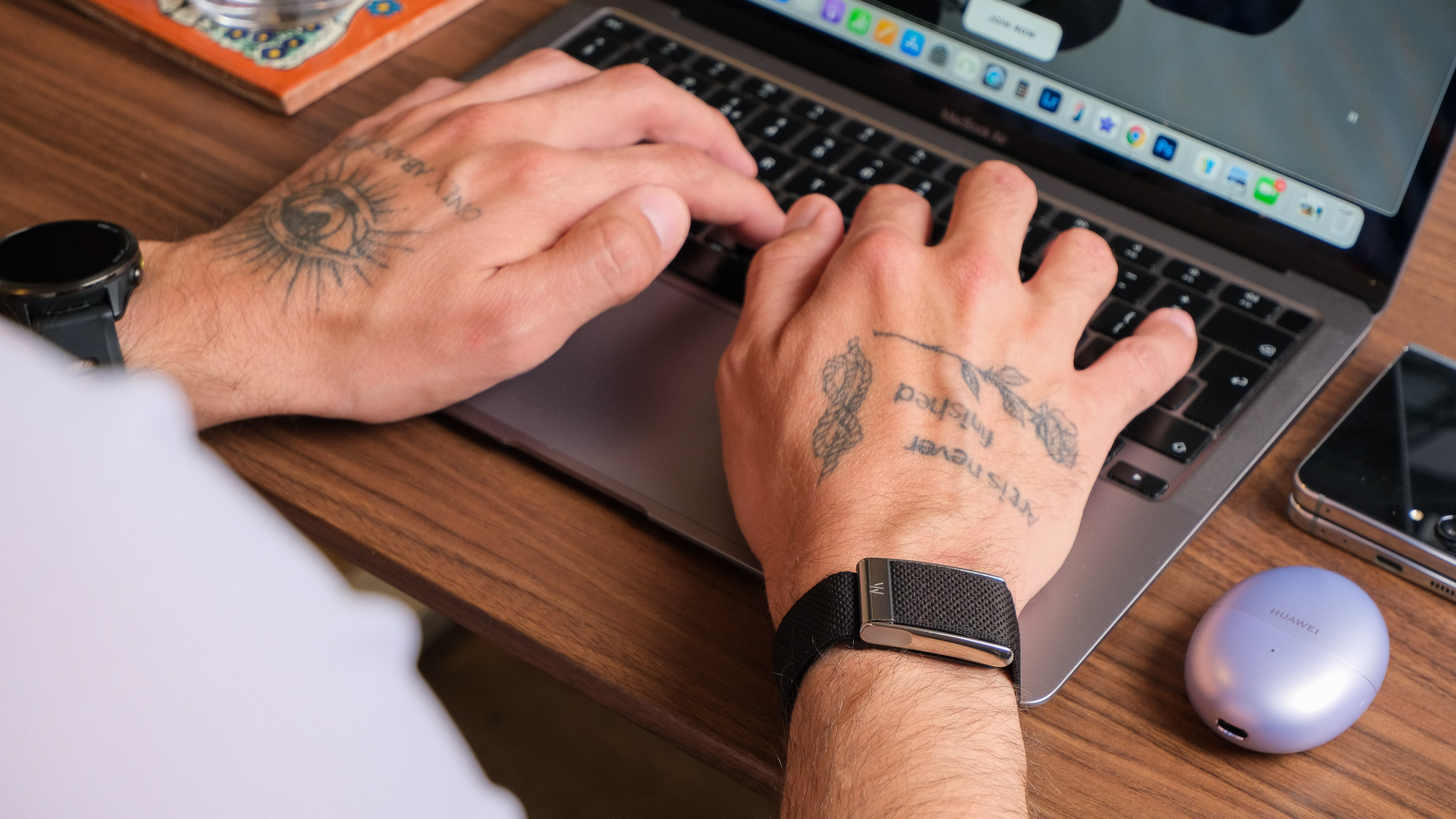
The Whoop MG refines the screenless formula with advanced metrics like ECG and blood pressure tracking, but it comes at a steep subscription cost. Sleek, distraction-free, and supported by one of the best fitness apps around, it’s a premium choice, but not essential unless you crave the full Whoop experience
-
+
Distraction-free fitness and health tracking
-
+
Sleek, easy-to-use app
-
+
Charge it without taking it off
-
+
Unique strain-based tracking system
-
+
Automatically tracks steps and some exercises
-
-
Lower-tier plans limit data access
-
-
Extra accessories cost more
-
-
Manual blood pressure input required (at first)
-
-
Doesn’t auto-track all walks
-
-
ECG only works with specific straps
Why you can trust T3

After years of sticking with the popular Whoop 4.0, the brand now offers two new options: the Whoop 5.0 and the more advanced Whoop MG, which I’m reviewing here.
In case you don’t know, up until recently, the company provided the hardware free of charge to those who subscribed to Whoop. This changed slightly with the introduction of the tiered subscription system and the two new wearables.
The Whoop MG is the company's most advanced screenless wearable. It can track ECG and blood pressure, among a range of other health, fitness, and recovery metrics. It accompanies the highest subscription tier, Life, which, not surprisingly, offers daily blood pressure insights, a Heart Screener with ECG and irregular heart rhythm (Afib) notifications.
I’ve been testing the latest and greatest Whoop tracker for a month, and it feels both familiar and new at the same time. Just like with previous models, a huge emphasis is on the app experience, so this Whoop MG review is as much a review of the latest version of the companion app as it is of the hardware.
Whoop MG review
Price and availability
The company announced the Whoop MG alongside the Whoop 5.0 in May 2025. The bands aren’t available to buy directly; instead, you need to subscribe to one of the membership options at Whoop, of which there are three: One, Peak and Life. The Whoop MG comes included when you subscribe to Life, which costs £359/ $359/ AU$ 629 per annum.
Specifications
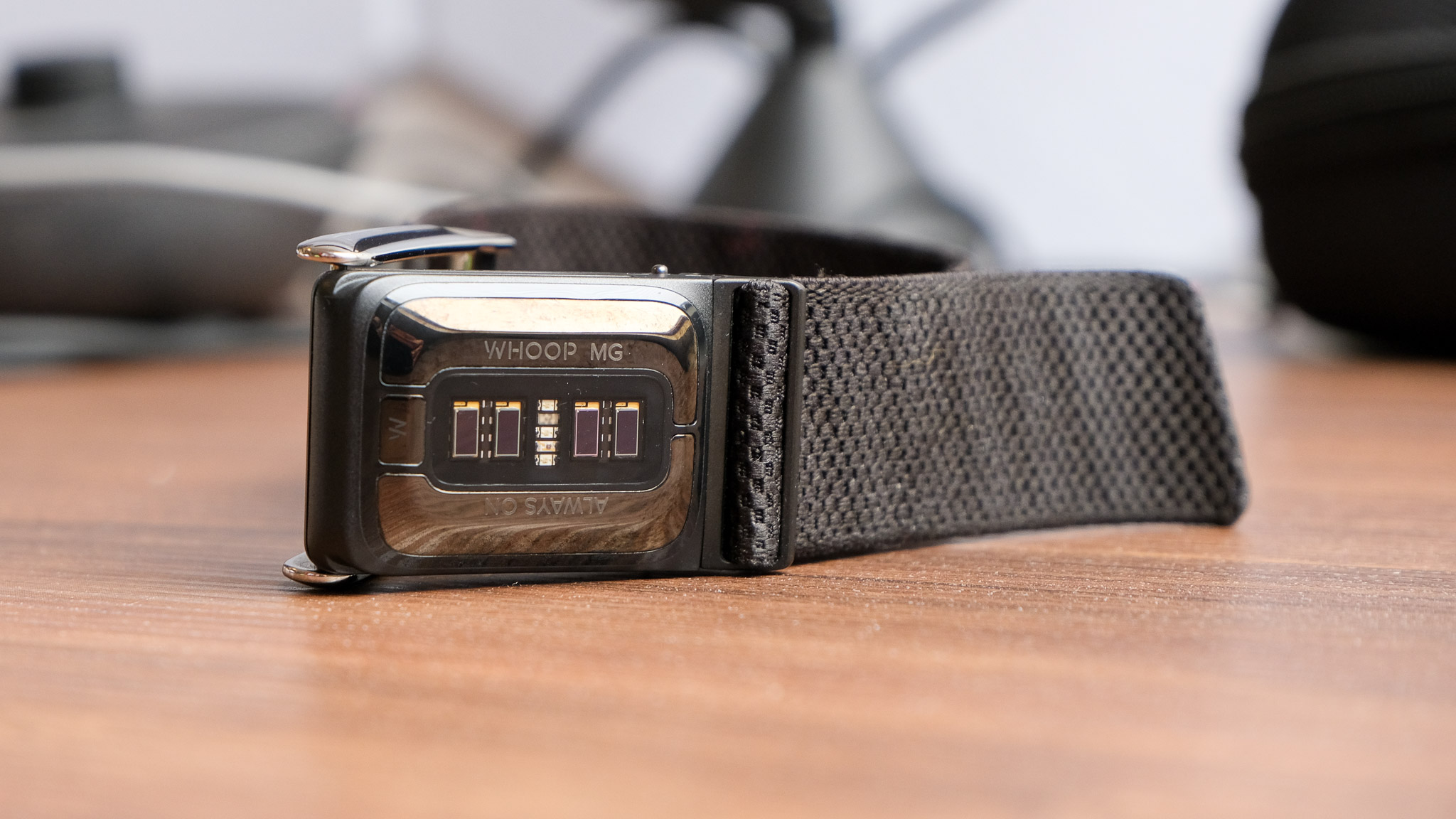
- Works with: iPhone and Android
- Size: 1.37 x 0.94 x 0.42 in/ 34.7 x 24 x 10.6 mm
- Weight: 27.3 g
- Water resistance: IP68 (up to 10 meters)
- Battery life: up to 14 days
- Heart rate sensor: Yes
- GPS: No
- Operating system: n/a
Design and build quality
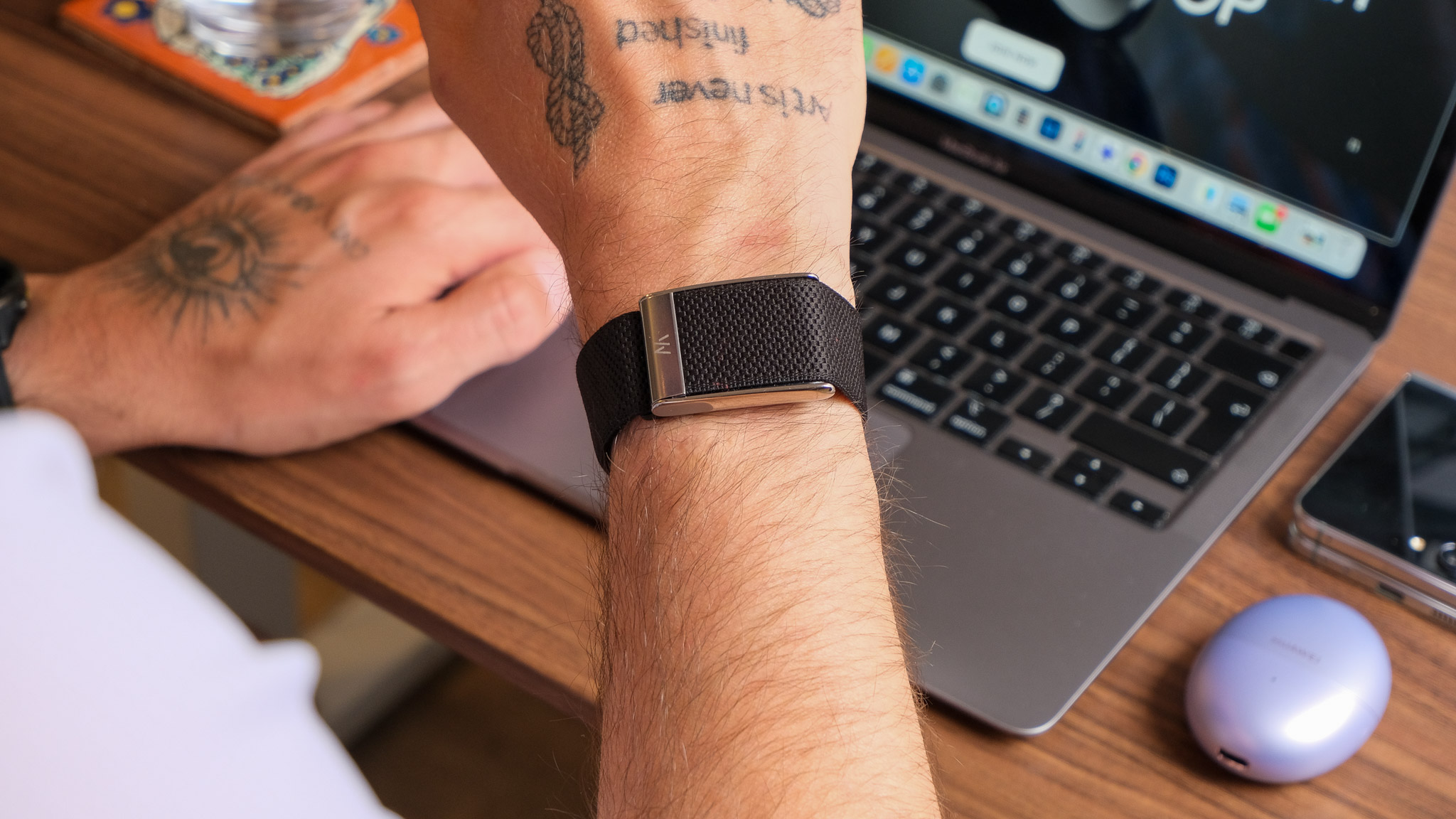
The Whoop MG follows the style and functionality of its predecessor, offering a screenless tracking experience. According to the brand, it’s 7% smaller than the Whoop 4.0 and somewhat bigger than the Whoop 5.0 “due to the conductive clasp required for ECG signal acquisition.”
Like its predecessor, the Whoop MG is a minimalist optical sensor strapped to your wrist — no display, no buttons, just a single LED you can tap to check the battery.
Get all the latest news, reviews, deals and buying guides on gorgeous tech, home and active products from the T3 experts
The tracker is IP68-rated and is swim-proof for up to 10 meters. It’s not quite Apple Watch Ultra 2 or Garmin Fenix 8 levels of dive capabilities, but at least you can wash your hands and probably even have a shower without taking off the wearable.
The Whoop MG weighs approximately 27 grams; lightweight enough for all-day wear. You can also wear it on different body parts using optional accessories (e.g. Whoop apparel, bicep band, etc.), an approach unique to the brand.
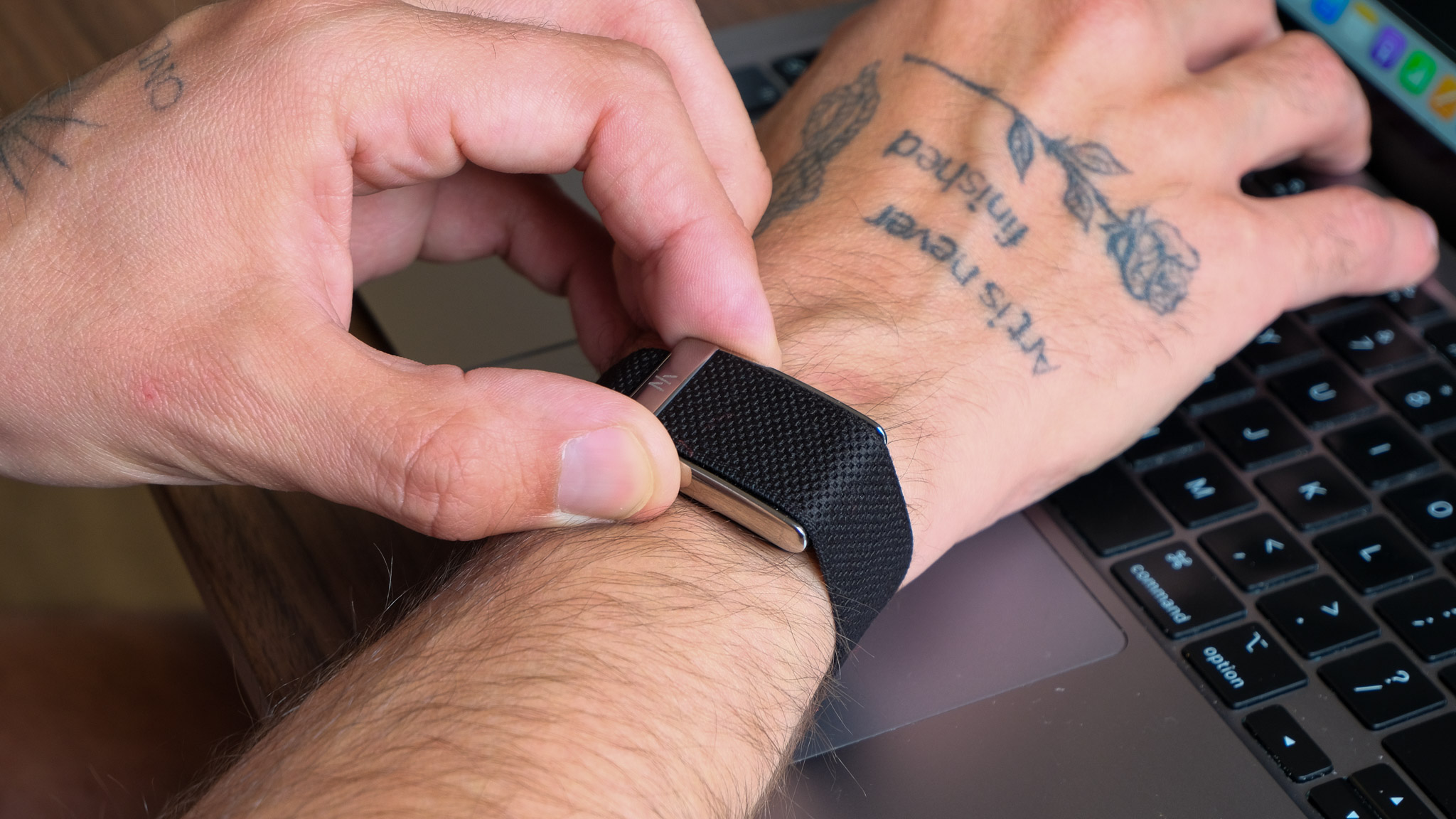
There is a small caveat, though. Only the SuperKnit Luxe with its conductive clasp enables the ECG and the Heart Screener functions. Currently, all other straps and accessories disable them. Plus, they are pricey, with a 4-set of boxers costing as much as £96 – ouch.
Most fitness trackers come with this feature these days, but neither the Whoop MG nor the Whoop 5.0 has built-in GNSS, which is a shame. Sure, it helps improve battery life, but the lack of a GNSS unit means the wearable can’t track the route of your runs and cycles.
The Whoop MG has a vibration motor, allowing you to set alarms in the app and send them over to the wearable. These are silent alarms, which don’t disturb others in the bed. Conversely, if you’re prone to sleep deeply, you might not wake up to the Whoop MG gently buzzing away on your wrist.
Ironically, I missed having a small display – checking the time meant reaching for my phone and inviting distraction. If only there were a tiny display with just the time on it, that would be a real treat.
Features and accuracy
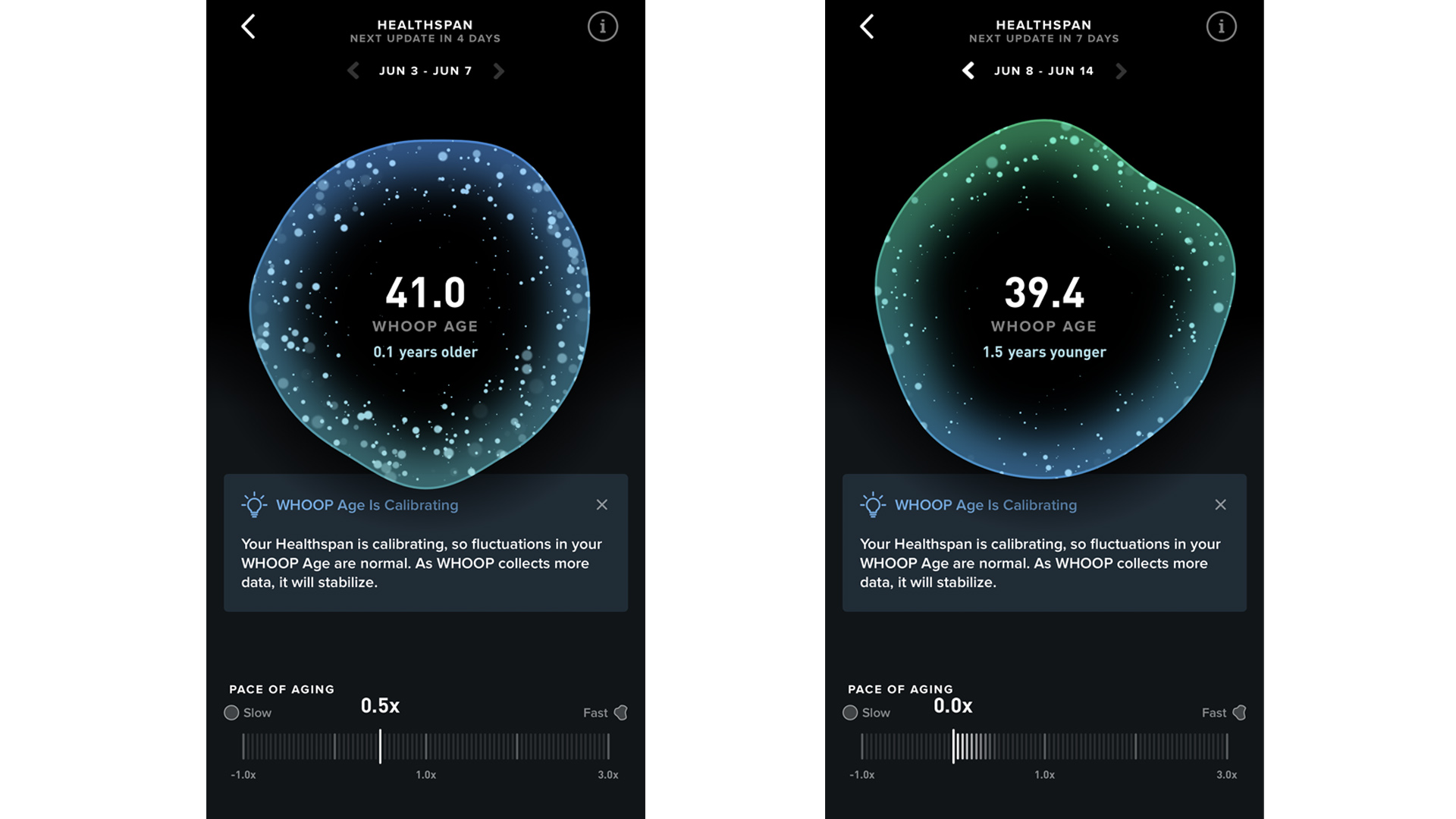
Whoop also announced new features when the latest wearables were released. These include Healthspan and Pace of Ageing, ECG and Heart Screener, Daily Blood Pressure Insights and Afib notifications. ECG, Heart Screener and blood pressure are exclusive to the Life membership tier and the Whoop MG.
Most people, like me, were most interested in the Healthspan and Pace of Ageing. The former tells you your Whoop age, which is based on nine biometrics that have a “direct impact on preventing or encouraging longevity.” These are:
- Total hours of sleep
- Sleep consistency
- Time spent in heart rate zones 1 through 3
- Time spent in heart rate zones 4 through 5
- Time spent strength training
- Daily steps
- VO2 Max
- Resting heart rate (RHR)
- Lean body mass (LBM)
It’s not dissimilar to Garmin’s Fitness Age and tells you how old you really are compared to your biological age. It can go up and down weekly, as mine did, depending on how much you exercise and sleep.
I tested the Whoop MG in a rather turbulent time with lots of international travel and little to exercise for about three weeks. After three weeks – it takes 21 days for Healthspan to calibrate – my Whoop age came in at 0.1 years older than my biological age. For comparison, my Garmin Fitness Age is around 5 years younger than my biological age.
Interestingly, when I was first given my Whoop age, the app also said my Pace of Ageing was 0.5x, meaning I was ageing slower than the average person. Of course, these first readings were somewhat compromised, and a week later, with my exercise and sleep routine back on track, my Whoop age was already 1.5 years younger than my biological age. My Pace of Ageing also went down to 0.0x.
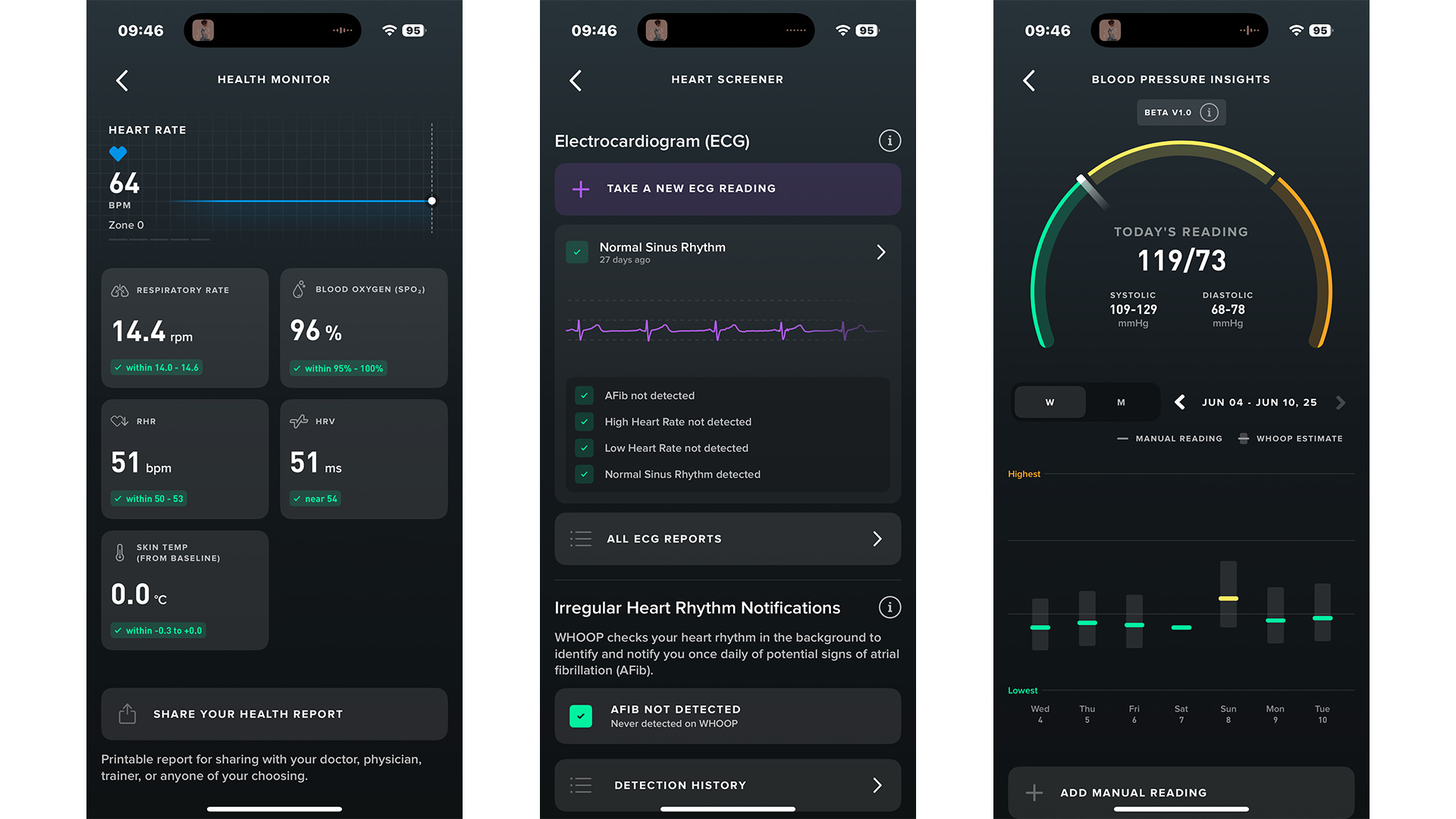
Heart Screener and ECG are fine. Like in most cases, you have to take readings manually, which is fine, but the app doesn’t seem to bother to send reminders to take these readings. I took one a month ago, and all looked tickety-boo, so the app just says it’s all looking dandy, using data from a month ago. For all I know, my heart could be imploding.
(It probably isn’t, though.)
Blood pressure estimations are also interesting. You need to feed the algorithm the first reading yourself, which might be challenging for some. I used the Garmin Index BPM (highly recommended) to set a baseline; if you aren’t planning on buying a blood pressure cuff, you can drag yourself over to your GP and take the measurements there for free.
After that, the Whoop algorithm provides daily blood pressure estimates — not true readings like the Huawei Watch D2’s inflatable cuff, but still useful.
I don’t have any blood pressure issues, and Whoop’s estimations seem to confirm this. I took manual readings throughout the testing period, and generally speaking, they were all in the same ballpark.

Strain tracking remains at the core of the Whoop experience, balancing exertion with sleep and recovery. The app will always recommend an optimal strain level for the day based on your training, sleep and stress levels. You can decide not to hit it or go over it, as long as the system is in balance.
The Whoop MG automatically tracks specific exercises, such as cycling, walking, running, etc. You can log these manually retrospectively, in case the Whoop MG doesn’t quite get these right. While other wearables like the Oura Ring 4 recognise shorter and less intense walks, the Whoop doesn’t.
This wouldn’t be an issue, but the app will see the result of walking (i.e. increased physiological stress) and count it against your strain. This, in turn, will make it look like you were more stressed than you actually are, which has an impact on your strain and recovery scores.
You can log your walks the Whoop MG doesn’t recognise manually, but it’s a bit of a faff. Ideally, a wearable launched in 2025 using millions of data points gathered by Whoop members throughout the years should be able to tackle this issue. However, sleep tracking has only been introduced with the latest slew of Whoop wearables, so the company may refine its algorithm late

r.
As for the Whoop Coach, it was one of the first integrated AI chatbots in wearables, and it’s still present in the Whoop app. I found it still basic and on par with similar setups from other smartwatch brands. The main issue is that none of them can offer real insights into training and recovery because that might make the company responsible for the data.
Instead, Whoop Coach talks about the weather and other data that can also be found in the admittedly sleek and user-friendly app. It’s not the worst, but I get very little out of it. It’s worth mentioning that despite it being available for almost two years, Whoop Coach is still in beta, so take its suggestions and insights with a pinch of salt.
Battery life and charging
One good thing about the lack of screens and GNSS unit is that the battery life is absolutely brilliant on the Whoop MG. On average, it lasts around two weeks, and unless you’re taking ECG readings every two seconds, it’s likely it won’t last any less for you.
Just like before, the charger pod is actually wireless and can be slotted on top of the Whoop MG while wearing it. The company says it takes around two hours to fully charge the battery; I can’t confirm this, as I used the pack to top up the battery as and when I was near where I store it.
The two-week battery life means you won’t have to worry about the Whoop MG running out of juice. During the month-long testing period, I used my top-up method maybe three times. The lack of plugged-in time is one of the more attractive features of the Whoop MG, that’s for sure.
Verdict
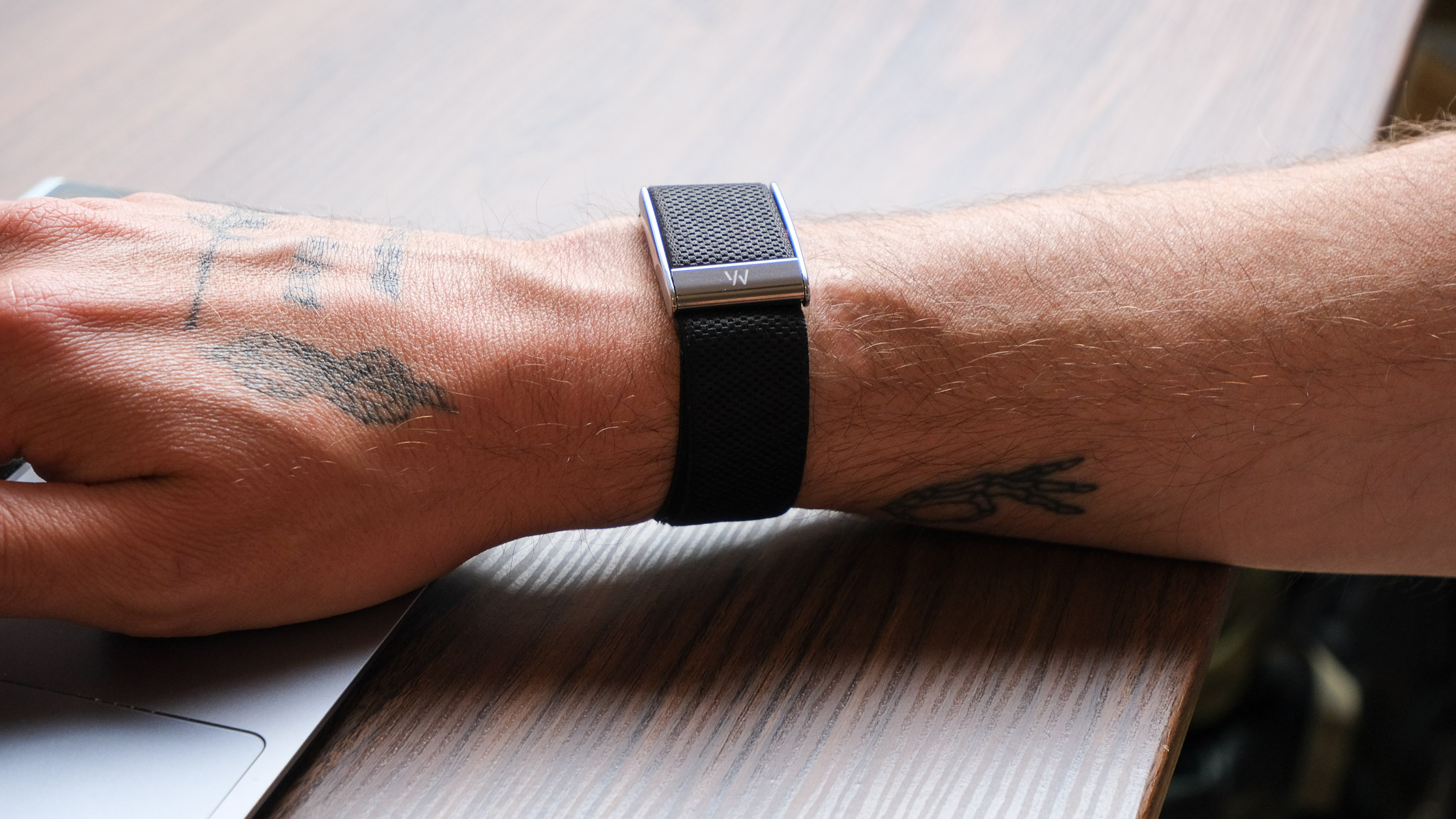
The Whoop MG is a thoughtful, polished upgrade that elevates the Whoop experience without necessarily redefining it. The addition of ECG and daily blood pressure estimations brings it closer to matching the feature sets of more traditional wearables, but it doesn’t leap ahead. Instead, it refines what was already a distraction-free, data-driven platform for those serious about optimising their health and recovery.
That said, it’s hard to ignore that the Life subscription – the only way to access the MG – is very expensive. Over time, it costs significantly more than buying a high-end multisport watch outright. While the experience is premium, the question is less about the quality of the platform and more about how much you value Whoop’s interpretation of health tracking.
The app remains one of the best in the business, intuitive and packed with genuinely useful insights, and for many, that alone could make it worth the price of admission. But cheaper alternatives, like the Whoop 5.0 on the Peak plan, or even newer smart rings and fitness bands, are beginning to nibble at Whoop’s unique position.
Still, despite its steep cost and a few early niggles with tracking, the Whoop MG delivers a compelling, distraction-free experience. It's a luxury wearable for those who appreciate minimalism and are willing to pay a premium for it, and for them, it’s hard to do better.

Matt Kollat is a journalist and content creator who works for T3.com and its magazine counterpart as an Active Editor. His areas of expertise include wearables, drones, fitness equipment, nutrition and outdoor gear. He joined T3 in 2019. His byline appears in several publications, including Techradar and Fit&Well, and more. Matt also collaborated with other content creators (e.g. Garage Gym Reviews) and judged many awards, such as the European Specialist Sports Nutrition Alliance's ESSNawards. When he isn't working out, running or cycling, you'll find him roaming the countryside and trying out new podcasting and content creation equipment.
You must confirm your public display name before commenting
Please logout and then login again, you will then be prompted to enter your display name.